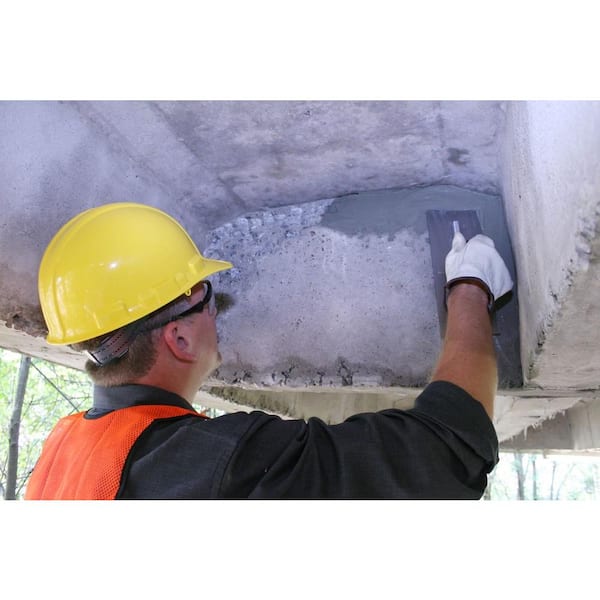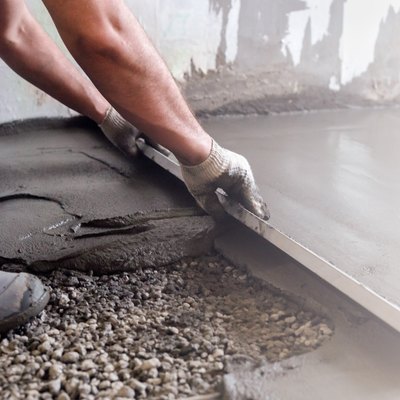Picture this: you’re knee-deep in a home renovation project, eager to transform your space. You’ve just finished laying new tiles, but a stubborn patch of mortar stubbornly clings to your floor, defying your best scrubbing efforts. The frustration mounts, and you’re left wondering, “How do I get this mortar off?” Don’t despair! We’re here to empower you with the knowledge and tools to conquer this common DIY dilemma.

Image: sayenscrochet.com
Removing mortar from your floor is a common challenge faced by homeowners, DIY enthusiasts, and seasoned contractors alike. Whether it’s leftover mortar from a tiling project, a spilled bucket of mix, or a stubborn stain from years gone by, knowing the right techniques and tools can make all the difference. This guide will delve into the best ways to tackle this task, from the safest methods to the most efficient approaches, ensuring you can confidently reclaim your clean and beautiful floors.
Fresh Mortar: Attack While It’s Wet
The golden rule of mortar removal is to act swiftly, especially when dealing with fresh mortar. The longer it sits, the harder it will become, transforming from a soft, workable paste into a rock-solid obstacle.
The best tool for fresh mortar is a wet sponge. Saturate the sponge with water and use it to gently wipe away the excess mortar. If the mortar has already started to harden, you can add a bit of dish soap to the water to help loosen it. Do you have a trowel handy? This is another tool that can come in handy for scraping away excess wet mortar.
Dried Mortar: Time to Get Tough
If the mortar has dried, you’ll need a bit more muscle to tackle the chore. But, don’t panic; there are still several effective strategies.
1. Mechanical Removal: The Power of Abrasion
This method relies on physical force to break down the hardened mortar. Here’s where you’ll call upon a few tools:
– A scraper: Scrapers come in various forms, from putty knives to specialized floor scrapers. Choose one with a sturdy blade and handle and use a gentle, scraping motion to remove the mortar. This method is best suited for removing large chunks of mortar.
– A wire brush: This is a great option for smaller areas and embedded mortar. The bristles can loosen the mortar and help to remove it from the surface of your floor. Apply moderate pressure and be careful not to damage the underlying material.
– A sandpaper: This is an excellent option for removing mortar stains and smooth surfaces like concrete or tiles. Choose a grit appropriate for the material and the level of stubbornness of the mortar. Start with a lower grit and progress to higher grits to achieve a smoother finish.

Image: sayenscrochet.com
2. Chemical Solutions: Where Muscle Meets Chemistry
Chemical cleaners can work wonders for removing mortar, but caution is key. It’s crucial to choose the right cleaner and follow instructions carefully to avoid damaging your floor or yourself.
– A commercially available mortar remover: These specialized solutions are designed to break down mortar and make it easier to remove. Look for products specifically designed for your flooring material. Always apply the cleaner according to the manufacturer’s instructions. Wear protective gloves and ensure adequate ventilation while using these cleaners.
– White vinegar: A less aggressive but surprisingly effective option, white vinegar can be used to loosen and soften hardened mortar. Apply undiluted vinegar to the mortar and let it sit for several minutes. Then, use a scraper or a wire brush to remove the loosened mortar.
3. The Gritty Approach: Sandblasting and Grinding
For heavier-duty mortar removal, sandblasting and grinding are powerful tools, but they require special equipment and safety measures.
– Sandblasting: This technique utilizes compressed air to propel a stream of abrasive particles, effectively removing the mortar. It’s a highly effective method for removing large areas of stubborn mortar, but consult a professional before attempting sandblasting on your own. Make sure to use proper protective gear including a respirator, safety glasses, and gloves.
– Grinding: Grinding machines utilize a rotating abrasive disc to remove mortar and level surfaces. This technique delivers a more precise and controlled approach compared to sandblasting. However, it also requires a significant level of expertise and appropriate safety equipment for operation.
Expert Tips to Maximize Mortar Removal Success
Here are a few expert tips to help you achieve the best results:
– Protective Gear is Your Friend: Wear gloves, safety glasses, and a dust mask to protect yourself from dust and chemicals. This is especially important when dealing with any chemicals or abrasive methods.
– Work in Sections: To make the process less daunting, break down the removal into smaller sections. Tackle one area at a time to ensure you’re removing all the mortar effectively.
– Patience is Key: Removing mortar takes time and requires a degree of patience. Don’t get discouraged if you don’t see immediate results; let the chemicals or abrasive tools do their work.
Best Way To Get Mortar Off Floor
Conclusion
Removing mortar from your floor can be a challenging task, but with the right tools, techniques, and a touch of patience, it’s a challenge you can overcome. Whether you’re tackling fresh mortar or dealing with stubborn stains, this guide provides a roadmap for success. Remember to prioritize safety, follow instructions carefully, and, most importantly, celebrate each step toward your clean and beautiful floor. For complex tasks or challenging situations, it’s always wise to consult with a professional for expert guidance and ensure a successful and stress-free outcome.






